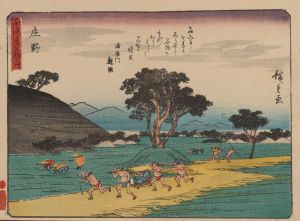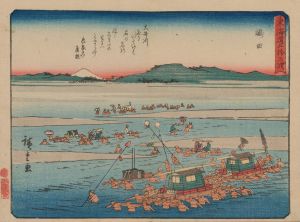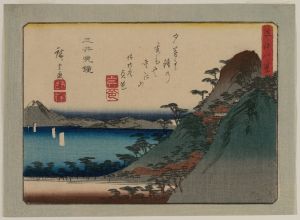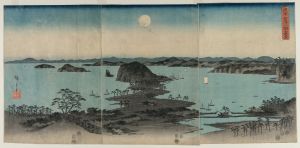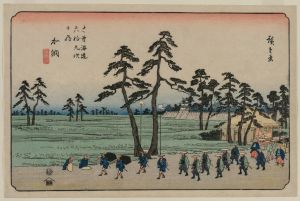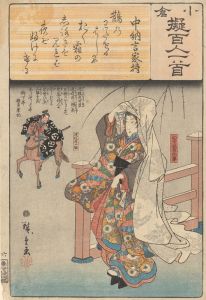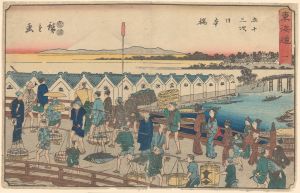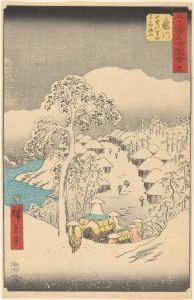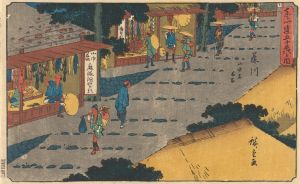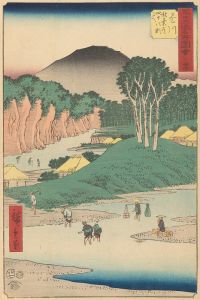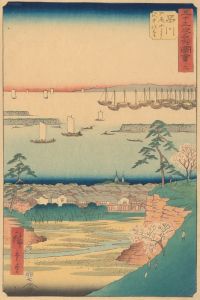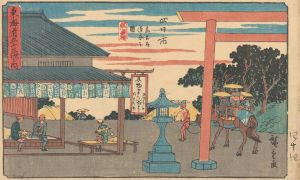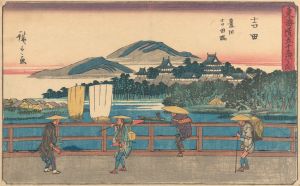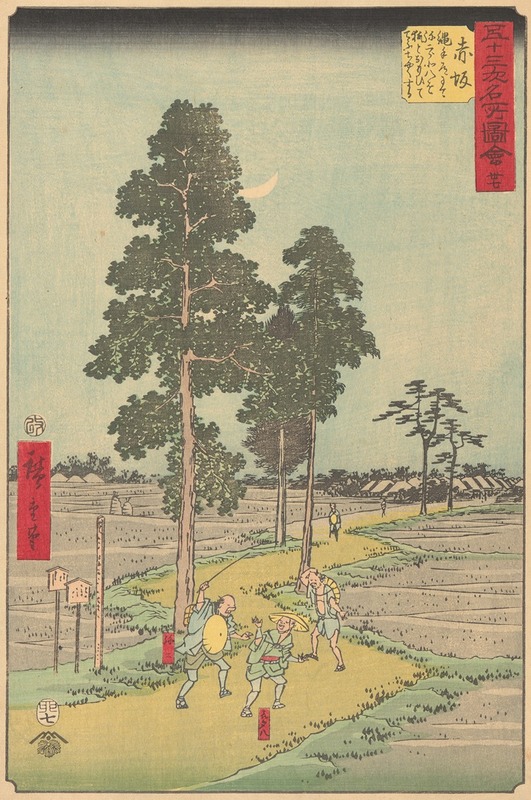
Akasaka
A hand-painted replica of Andō Hiroshige’s masterpiece Akasaka, meticulously crafted by professional artists to capture the true essence of the original. Each piece is created with museum-quality canvas and rare mineral pigments, carefully painted by experienced artists with delicate brushstrokes and rich, layered colors to perfectly recreate the texture of the original artwork. Unlike machine-printed reproductions, this hand-painted version brings the painting to life, infused with the artist’s emotions and skill in every stroke. Whether for personal collection or home decoration, it instantly elevates the artistic atmosphere of any space.
Akasaka by Andō Hiroshige is a notable work by the renowned Japanese ukiyo-e artist, Andō Hiroshige, who lived from 1797 to 1858. Hiroshige is celebrated for his landscape prints and his ability to capture the transient beauty of nature and the changing seasons. He was a master of the ukiyo-e genre, which flourished in Japan from the 17th to the 19th centuries and is characterized by woodblock prints and paintings that depict subjects such as landscapes, theater, and the pleasures of urban life.
The artwork "Akasaka" is part of Hiroshige's famous series "The Fifty-three Stations of the Tōkaidō" (Tōkaidō Gojūsan-tsugi), which was first published in the early 1830s. This series consists of 55 prints, including the starting point at Nihonbashi in Edo (modern-day Tokyo) and the endpoint at the Sanjō Bridge in Kyoto, along with the 53 stations in between. The Tōkaidō road was the most important of the Five Routes of the Edo period, connecting Edo with Kyoto, and it was heavily traveled by various people, including merchants, pilgrims, and government officials.
Akasaka is one of these stations, and Hiroshige's depiction of it captures the essence of travel and the natural beauty of the Japanese landscape. In this print, Hiroshige illustrates the rural scenery and the daily life of travelers and locals. His use of perspective and composition draws the viewer into the scene, providing a sense of the journey along the Tōkaidō road. The print showcases Hiroshige's skill in rendering atmospheric effects, such as the play of light and shadow, and his attention to detail in depicting the flora and fauna of the region.
Hiroshige's work on the Tōkaidō series was groundbreaking in its approach to landscape art. He moved away from the traditional, more formalized styles of earlier Japanese art and embraced a more naturalistic and observational approach. This shift allowed him to capture the dynamic and ephemeral qualities of the natural world, which resonated with the growing urban population of Edo, who were increasingly interested in travel and the exploration of Japan's scenic beauty.
The "Akasaka" print, like others in the series, reflects Hiroshige's innovative use of color and his mastery of the woodblock printing technique. He employed a palette that was both vibrant and subtle, using gradations of color to create depth and mood. His prints often included poetic elements, such as the depiction of weather conditions or the time of day, which added layers of meaning and emotion to the scenes.
Hiroshige's "The Fifty-three Stations of the Tōkaidō" series, including the "Akasaka" print, had a significant impact on both Japanese and Western art. It influenced the Impressionists and other Western artists in the 19th century, who admired Hiroshige's compositions and his ability to capture the fleeting moments of everyday life. Today, Hiroshige's works are celebrated for their artistic innovation and their enduring beauty, and they continue to be studied and appreciated by art enthusiasts and scholars around the world.





